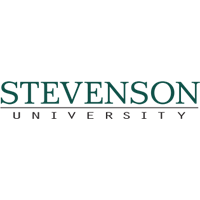Below is a summary of the abstract you submitted. Presenting author(s) is shown in bold.
If any changes need to be made, you can modify the abstract or change the authors.
You can also download a .docx version of this abstract.
If there are any problems, please email Dan at dar78@pitt.edu and he'll take care of them!
This abstract was last modified on March 18, 2024 at 9 p.m..

In Fall 2023, Stevenson University launched SEA-PHAGES labs in four sections of Introductory Biology lab and one section of Honors Introductory Lab. In total, there were almost 100 students registered across the five sections. Each student collected three soil samples, most of which were taken from Stevenson University’s Owings Mills, MD campus. Students performed enriched isolation using Arthrobacter globiformis B-2979 to increase the chances of finding phage. Spot tests were used to identify soil samples that contained phage. Students then worked in pairs to purify and amplify the phages. Across the five sections, approximately 50 novel bacteriophages were isolated and imaged by transmission electron microscopy at the University of Maryland, Baltimore County. Six of these phages that had a high enough titer and DNA concentration were sent to the University of Pittsburgh for Illumina sequencing. Two of these samples contained two different phages and were therefore not chosen for annotating. Three of the sequenced phages, ChuckDuck (Cluster FA), Juno112 (Cluster AS3), and KHumphrey (Cluster AS3) are currently being annotated by three sections of a SEA-PHAGES Genomics lab. The remaining sequenced phage was adopted out. All three phages are temperate siphoviruses. Initial autoannotation with DNAMaster version 5.23.6 Build 2705, GeneMark version 2.5p, and Glimmer revealed that ChuckDuck’s genome is 42,833 bp with 68 genes, including two potential tRNA genes. Juno112’s genome is slightly smaller, just over 40,000 bp with 70 genes and no predicted tRNA genes. Interestingly, there is a cluster of 13 genes on the reverse strand in the center of the genome. KHumphrey’s genome is the smallest, at 38,343 bp and contains 69 genes with no detectable tRNA genes. Like Juno112, KHumphrey’s genome also has a cluster of 13 genes in the middle of the genome on the reverse strand. The 45 students enrolled in the three SEA-PHAGES labs this semester will continue manually revising the auto-annotations.
